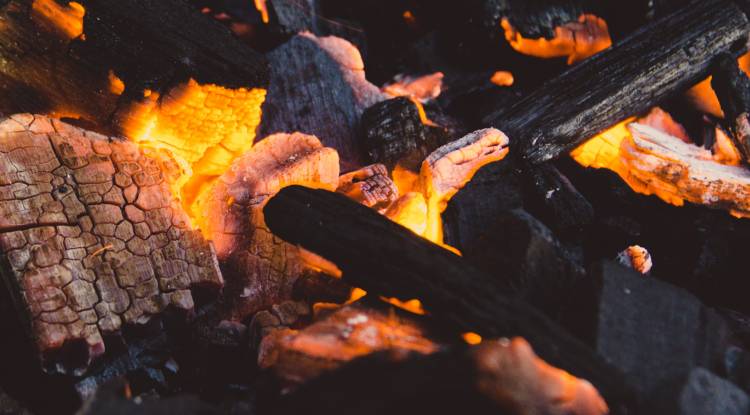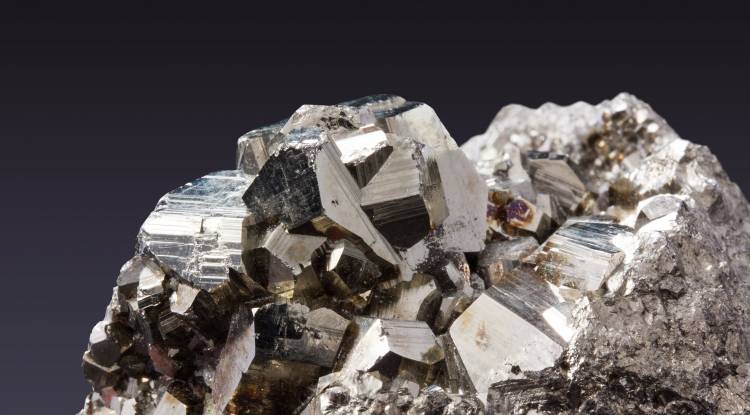Biochar in the Mining Industry
Biochar has several applications in the mining industry. The use of biochar in energy, ore processing, water cleaning and pollution prevention is discussed.

By Suzanne E. Allaire
Owner, GECA Environnement
Biochar can be used different ways in the mining industry, all of which have a strong positive impact on the environment. Biochar is used either to decrease the carbon footprint and the impact on climate change, or to clean the sites during and after mining activities. In fact, we replace coal, anthracite, activated carbon and other types of carbon by biochar within a variety of mining activities: heat generating, ore processing, water cleaning, pollution prevention, waste revegetation and reducing air emissions. The following is an overview of the different uses of biochar.

Generating heat
Biochar can replace any energy source. Often, coal and anthracite are used to provide the maximum energy at the lowest cost in the mining industry. Around the world, this industry uses millions of tons of coal every year just for energy. To replace coal, biochar should contain high amounts of energy and be cooked at relatively high temperatures, meaning it must contain as little water as possible. When only used for heating, biochar can be made from the least expensive feedstock and is not specific; it is considered a commodity. Only a few biochar industrial plants in the world can produce enough biochar, as a commodity, to serve the mining industry to meet energy demands. Biochar will be produced in larger quantities as a commodity for coal replacement within the next few years in North America.

Ore processing
Some of the coal and anthracite is used for ore processing not only through heat delivery, but also through thermo-chemical reactions. In this case, biochar should be designed according to the desired chemical reactions. It should then contain precise amounts of specific elements and it shall not contain other elements that may cause undesired chemical reactions. This means the biochar must be designed for each ore processing plant and is not considered a commodity although large tonnage may be required. This is the case for iron ore pelletizing where it should provide energy, for example. In this case, silica content must be as low as possible and the carbon within the biochar must burn at the right temperature and be transferred to the iron.

Water cleaning
Most mining activities generate pollutants, often found in tailings, which are then released into the water and surrounding soil. Mining activities may also generate water for cooling, processing and generating reactions. All of this water must be cleaned up. Pollutants in tailings often cause acidic drainage with very low pH and heavy metals. To solve this issue, retention basins are created and water can be treated with activated carbon, decantation, precipitation and so on. Biochar usually has high pH, which helps decrease acidity. In addition, biochar could be used to remove heavy metals from the water in the basin. Biochar represents a much cheaper alternative to activated carbon, especially since it sorbs most of the heavy metals much better than the latter. For cooling and cleaning purposes, other chemicals such as organics contaminants (ex: oil) can accumulate in the water. Because of its excellent sorbing capacities for organic chemicals, biochar can be used to treat such water contamination.

Pollution prevention
When mining activities come to an end, the site must be rehabilitated through vegetation and by preventing water and soil pollution in the surrounding area. Plants often have great difficulties growing in mine tailings. Tailings often show very high or very low pH, no or very little nutrients, too much or too little drainage along with heavy metals in concentrations too high for plant growth. Adding biochar to tailings with other soil amendments is efficient in increasing plant growth and balance pH. In addition, it brings nutrients to plants, nutrients that do not have to be incorporated in the form of fertilizer that are mined elsewhere. Biochar is also known to sorb contaminants, decreasing their leaching toward the groundwater. Specific biochar shall be selected in each mine tailing situation and for each type of water contamination.
Overall impact of biochar
In conclusion, biochar can replace coal, activated carbon and fertilizers made from mining and fossil fuel in several mining activities.
Replacing coal by biochar considerably reduces greenhouse gas emissions. This is because for every ton of coal burnt, an equivalent of 3 tons of CO2 is emitted. This is in addition to CO2 emmited by the long transportation towards the mining sites and to sulphur emitted, causing acid rain. Comparatively, the use biochar produced nearby is carbon neutral or better. It can sequester carbon and does not emit sulphur compared to coal. It could be locally produced in most cases and could be manufactured with residues that would otherwise emit greenhouse gases through their decomposition.
Therefore, considering the large volume of coal and activated carbon made from fossil fuel that is consumed by the mining industry, a replacement by biochar is a smart move towards climate change resilience.
















